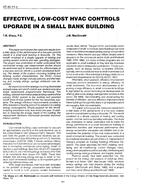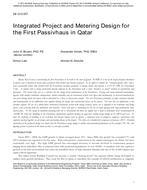Among the VOCs and formaldehyde sources in indoor environments, building and decoration materials are oftenpredominant. Our project is therefore to study material sources in situ for a better understanding of their impacts inindoor air quality. A new high school building, designed according to the French label of High Environmental Quality(HQE(R)) and equipped with dual-flow mechanical ventilation was studied. Measurements were made every two weeks overa period of 6 months in an unoccupied classroom in order to only consider material sources of VOCs and formaldehyde.Pollutant concentrations in air and at the air/material interface were determined using innovative passive samplingmethods developed in our laboratory. The ventilation rate was also determined by carbon dioxide injection in the room.The On-site measurements at the air/material interface allowed to identify and to rank the major sources of VOCs.Considering formaldehyde, the flooring was shown to be the most important source followed by the pupil desks. It has beenalso shown that the ventilation was working properly with an air exchange rate of 3.4 h-1, as recommended by thestandard for public building. The indoor air concentration of formaldehyde never exceeded 30 μg.m-3, the Frenchreference guide value for public building. The study enlightened also deposition process, showing the complexity ofmaterial/air interactions and the necessity to perform on-site surface measurements.
Citation: IAQ Conference: IAQ 2013: Environmental Health in Low Energy Buildings
Product Details
- Published:
- 2013
- Number of Pages:
- 11
- File Size:
- 1 file , 2.2 MB
- Product Code(s):
- D-2013IAQConf-41


